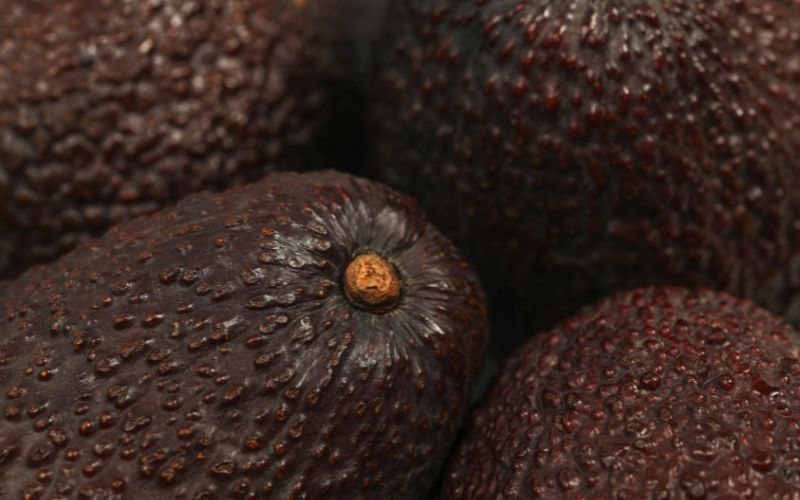Yes, you can eat avocado skin. This tough and somewhat bitter part of the beloved avocado, known for its creamy texture and rich flavor, often goes unnoticed. In this comprehensive exploration, we delve into the edible yet overlooked aspect of avocado skin.
Discover the potential health benefits and risks associated with incorporating avocado skin into your diet. Join us as we reveal surprising nutritional facts and offer practical tips on how to make the most out of every part of this versatile fruit.
Nutritional Value of Avocado Skin
Avocado skin contains several nutrients that contribute to its overall nutritional value. However, it is important to note that the skin is generally tougher and less palatable than the flesh. The flesh of the avocado is the primary source of its nutrients, and most people prefer to consume it for its pleasant taste and texture.

Eating Avocado Skin Benefits: Unveiling the Hidden Nutritional Value
Avocado skin, often overlooked, is a hidden trove of nutrition. Contrasting with the avocado’s creamy flesh, the skin might be tougher and less palatable but packs a surprising nutritional punch. While the avocado flesh is a go-to for its delightful taste and texture, the skin also merits attention for its health benefits.
Potential Benefits of Eating Avocado Skin:
1. Fiber Content: A lesser-known fact about avocado skin is its high dietary fiber content. This fiber is crucial for digestive health, aiding in regular bowel movements and preventing constipation. It contributes to a healthy gut ecosystem. However, the increased fiber in the skin, compared to the flesh, might pose a challenge in consumption but is worth the effort for its digestive benefits.
2. Antioxidant Properties: The skin of an avocado is rich in antioxidants. These powerful compounds are vital in protecting the body from oxidative stress and free radicals. Known for their anti-inflammatory effects, these antioxidants in avocado skin play a significant role in promoting overall health and well-being.
3. Vitamin and Mineral Content: While the avocado’s flesh is celebrated for its nutrient richness, the skin is no slouch either. It contains a spectrum of vitamins, including vitamin C, vitamin E, and B vitamins, alongside essential minerals like potassium and magnesium. These nutrients are integral to various bodily functions and overall health.

Is It Safe to Eat Avocado Skin? Understanding Risks and Considerations
While avocado skin offers potential benefits, there are also certain risks and considerations to keep in mind before incorporating it into your diet.
1. Pesticide Exposure
Conventionally grown avocados may be exposed to pesticides, which can accumulate on the skin. To minimize pesticide exposure, it is recommended to opt for organic avocados whenever possible. Washing the avocado thoroughly before consumption can also help remove any residue.
2. Digestive Issues
The skin of the avocado is tougher and more fibrous compared to the flesh. Some individuals may experience difficulty digesting the skin, leading to digestive discomfort, such as bloating or stomach upset. If you have a sensitive digestive system, it is advisable to avoid consuming the skin.
3. Unpleasant Taste and Texture
One of the main reasons people choose not to eat avocado skin is its taste and texture. The skin is generally tougher and has a bitter taste, which may not be appealing to everyone. Furthermore, the texture can be fibrous and slightly gritty, making it less enjoyable to eat.

Creative Ways to Add Avocado Skin to Your Diet for a Nutritional Boost
Avocado skin, often discarded, can be a unique addition to your diet. Here’s how you can creatively and safely include it in various recipes, maximizing both taste and nutrition:
- Smoothie Power-Up: Elevate your smoothies by blending in small pieces of avocado skin. This not only boosts the fiber content but also adds a nutritional punch to your favorite smoothie blends.
- Sauces and Dressings with a Twist: Incorporate finely chopped avocado skin into your sauces or dressings. It’s a fantastic way to infuse a subtle, earthy flavor and extra nutrients into every bite.
- Innovative Avocado Skin Tea: For a unique twist, steep avocado skin in hot water to brew a distinctive herbal tea, brimming with potential health benefits.
- Baking the Skin for Easy Blending: To simplify blending, try drying the avocado skin in the oven at 200-250 degrees F for about an hour. This process makes it easier to grind into a powder or paste. However, keep an eye on it to avoid burning, and be mindful that prolonged heating may diminish some nutritional elements.
- Whole Avocado Blending: For a hassle-free approach, halve or quarter the avocado and blend it, skin and all, with other ingredients. This method is perfect for those who prefer a more straightforward preparation.
- Flavor Considerations: Remember, the distinctive taste of avocado skin can slightly alter the flavor profile of your dishes. If not fully blended, small, chewy pieces may remain. Adjust the quantity based on your taste preferences and the specific recipe.

Proper Preparation and Cleaning
If you decide to consume avocado skin, it is crucial to properly prepare and clean it beforehand. Start by thoroughly washing the avocado under running water to remove any dirt or contaminants. You can also use a vegetable brush to scrub the skin gently. Once cleaned, the avocado skin can be sliced or chopped, depending on how you plan to incorporate it into your recipes.
Conclusion
In conclusion, while avocado skin is technically edible, it is not commonly consumed due to its tough texture, bitter taste, and potential digestive issues. Although avocado skin does offer some nutritional benefits, such as fiber and antioxidants, most people prefer to enjoy the creamy flesh of the fruit. If you decide to incorporate avocado skin into your diet, ensure it is thoroughly cleaned and properly prepared. However, it is essential to consider personal preferences, potential risks, and the overall enjoyment of the eating experience.
FAQ
Should I Remove Avocado Skin?
Whether to remove avocado skin depends on your personal preference and the intended use of the avocado. While the skin is tougher and less palatable than the flesh, it is edible and contains nutrients. If you’re looking to reap the full benefits of the fruit, you might consider using the skin in certain recipes.
What is the Healthiest Part of the Avocado?
The healthiest part of an avocado is often debated. While the creamy flesh is rich in healthy fats, fiber, and various vitamins, the skin and even the seed hold their own unique nutritional values. The skin, for example, is high in antioxidants and fiber.
Is Avocado Peel Edible?
Yes, avocado peel is edible. It contains several nutrients that contribute to its overall nutritional value, like dietary fiber and antioxidants. However, due to its tough texture and bitter taste, it’s not commonly consumed. With the right preparation, you can incorporate it into your diet.
How to Eat Avocado Skin?
Eating avocado skin can be an adventurous addition to your diet. You can blend it into smoothies, chop it for sauces or dressings, or even bake it to make it easier to grind into a powder or paste. It’s important to prepare it properly to make it more palatable and easier to digest.




